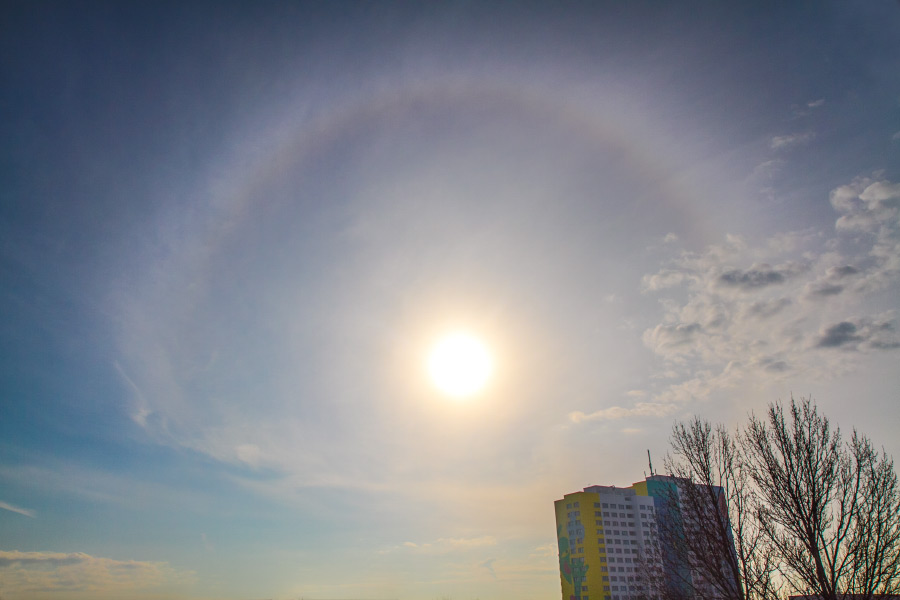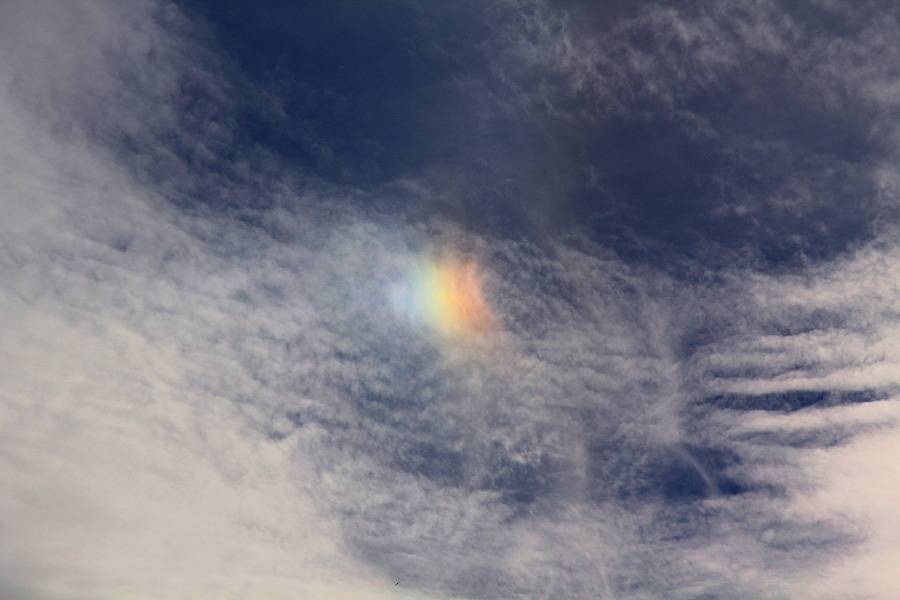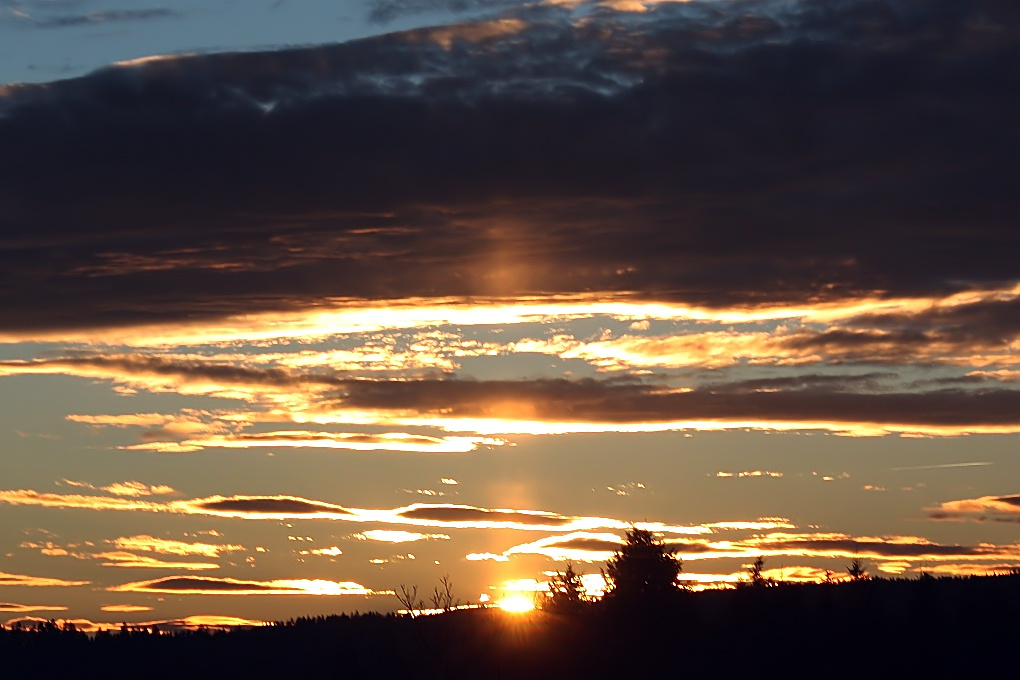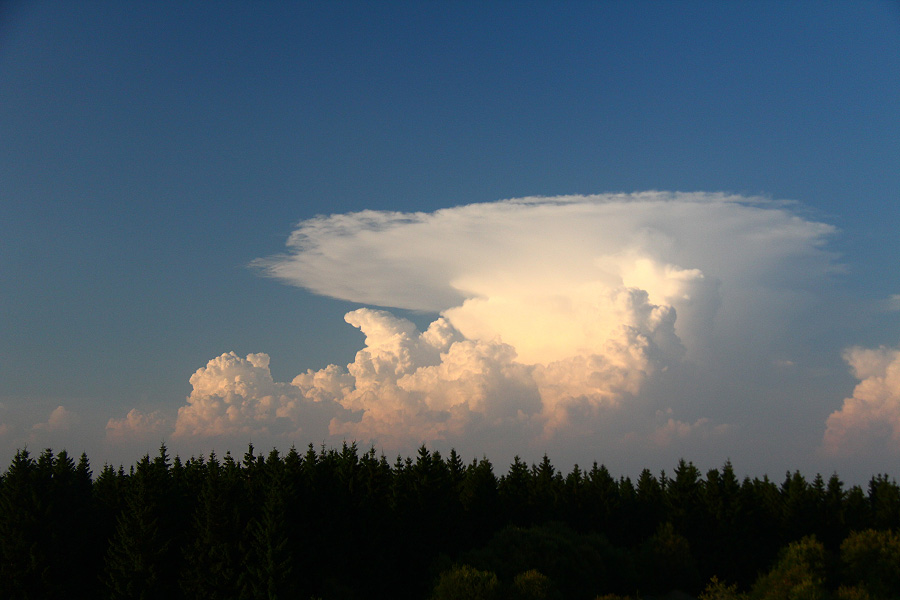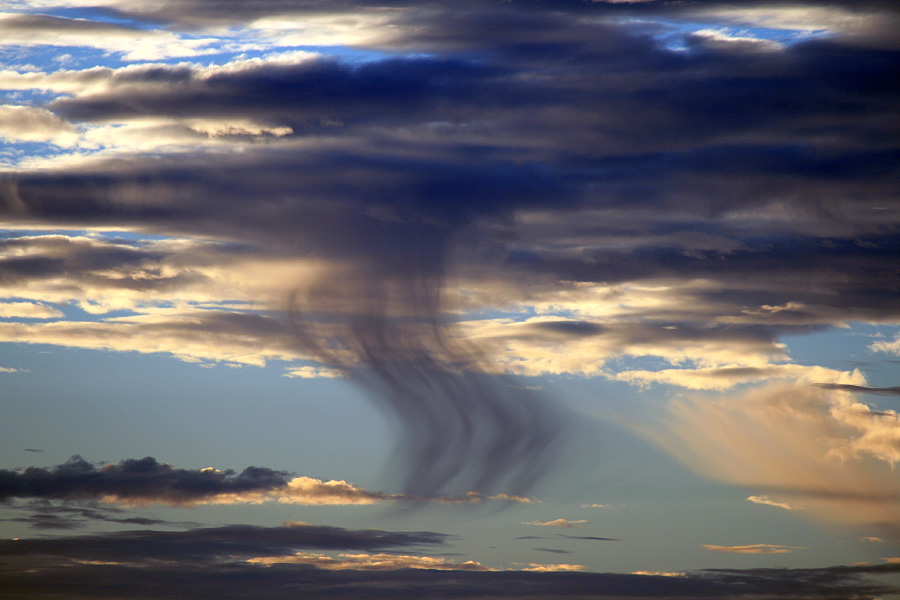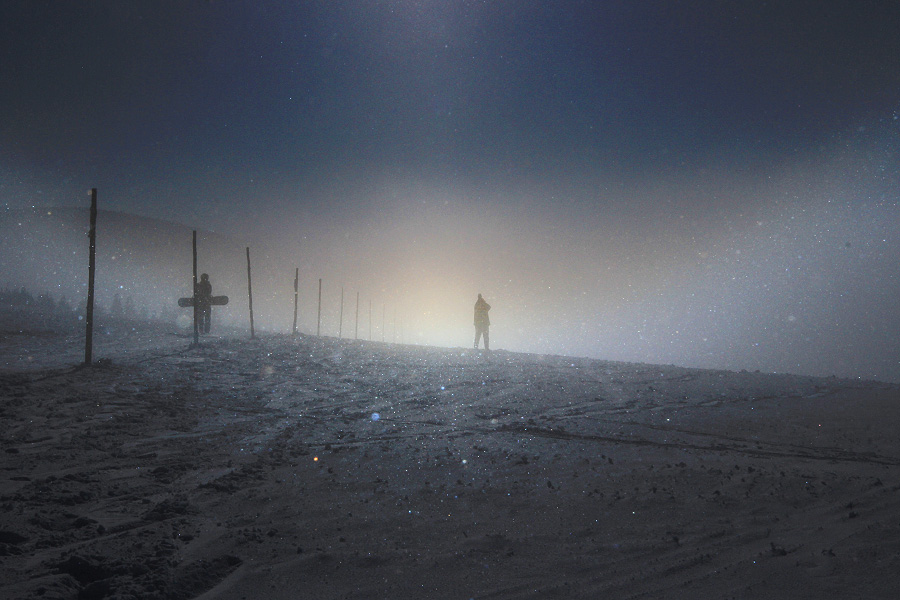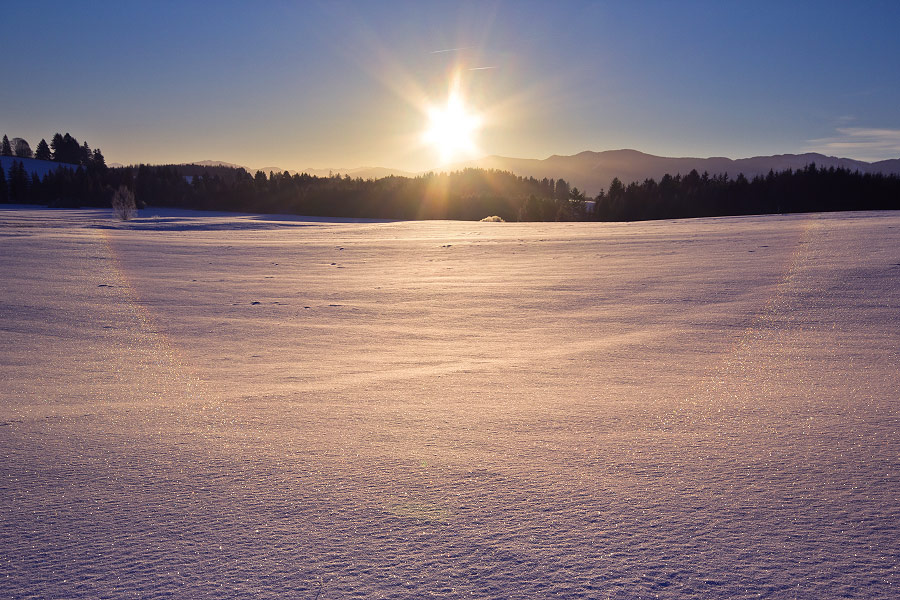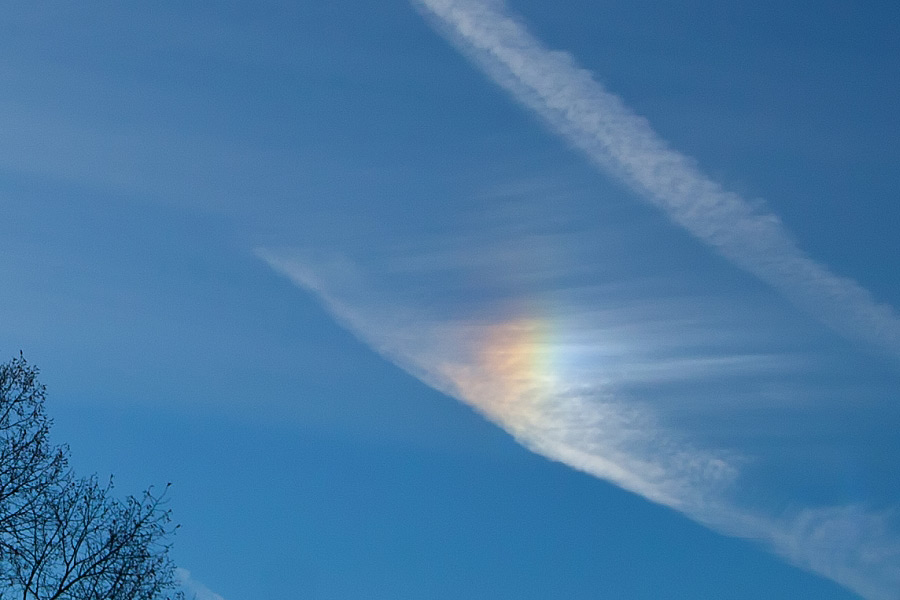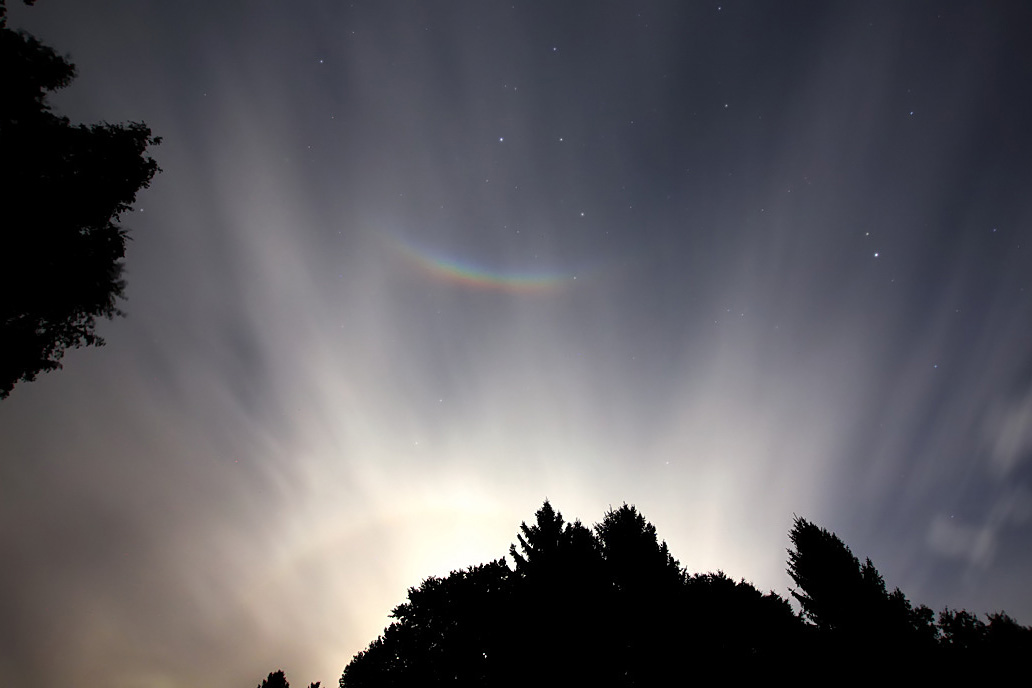Halos occur through refraction and reflection of light on ice crystals. One might think that ice crystals are only present in the atmosphere in winter. However, this is by no means the case. At an altitude of 7-12 km, temperatures are well below -20°C at any time of year. Therefore, ice crystals can also form in hot summer weather.
The high clouds, which consist mainly of ice crystals, are divided into three different types. These are cirrus, cirrostratus, and cirrocumulus. Whenever such clouds are seen in the sky, halo phenomena can always be expected.
These three types of clouds are responsible for most halo phenomena. However, there are other situations in which halos can be observed.
Altocumulus
The altocumulus belongs to the mid-level clouds. It consists only to a small extent of ice crystals. So far, mainly light pillars have been observed on altocumulus clouds.
Cumulonimbus
These are very towering cumulus clouds. The upper anvil-like part consists of ice crystals. Halos can sometimes be seen there.
Precipitation Streaks (Virga)
Virga, here on cirrocumulus, can produce very beautiful halos. They also occur with other cloud types, such as stratocumulus. With well-defined virga, it looks as if the clouds have beards. Sometimes the virga are so fine that you cannot see them. Elliptical rings have so far been observed exclusively with virga.
The moon, like the sun, can cause halo phenomena. However, the halos are correspondingly less bright. At night, the human eye primarily detects brightness differences and hardly any colors. Therefore, the halos often appear light gray, although they are actually colored. Nevertheless, you can perceive colors in bright moon halos. Even the
circumzenithal arc has been seen in color with the naked eye. In thin cirrostratus, stars are also visible. Based on the stars, the exact position of the halo to the moon and the width of the halo can be measured very well.
In winter, halos often occur that do not form in the ice crystals of cirrus clouds. The most beautiful, brightest, and most colorful halo phenomena occur, for example, in ice fog. During winter high-pressure weather conditions, heavy and cold air often sinks to the ground, forming a fog or high fog layer. The peaks of the mountains often rise out of the fog sea. If the temperatures in the fog area are still below freezing and the air saturated with water vapor can crystallize, an observer above the fog has the best conditions for a fantastic halo observation.
In flatlands, observing ice fog halos is more difficult because there is usually no sun as a light source in fog. However, light pillars can be observed at artificial light sources, such as street lamps.
In flatlands, under certain conditions, halos can form in polar snow (also called ice needles, diamond dust or diamond dust). These are smallest ice crystals that form in often clear skies when air humidity crystallizes. Due to their low weight, the ice crystals often float in the air or fall very slowly to the ground. Conditions for formation here are also very high humidity and temperatures below freezing. The lower the temperatures, the lower the relative humidity must be to reach moisture saturation of the air and form ice crystals.
Favored are river valleys or observation spots near water, but also the proximity of industrial plants that release water vapor through chimneys. Otherwise, observations are especially possible in the morning shortly after sunrise, when temperatures are lowest and relative humidity is generally highest. Parhelia are most frequently observed. This is mainly because at sunrise, the parhelia are at the observer's eye level, where the density of the "diamond dust" is greatest.
Halos, however, can occur not only in the ice crystals of diamond dust but also:
- in snow crystals, where in falling snow mostly light pillars, on a snow cover the 22° halo and 46° halo may appear.
- in morning frost, where, as on the snow cover, the 22° halo and the 46° halo can be observed.
- in hoarfrost. This forms at temperatures below -8°C and fog. After the fog dissipates, these tiny ice plates often detach from trees and other objects due to light wind and float in the air. So far, light pillars, parhelia, and the circumzenithal arc have been observed on floating hoarfrost plates.

